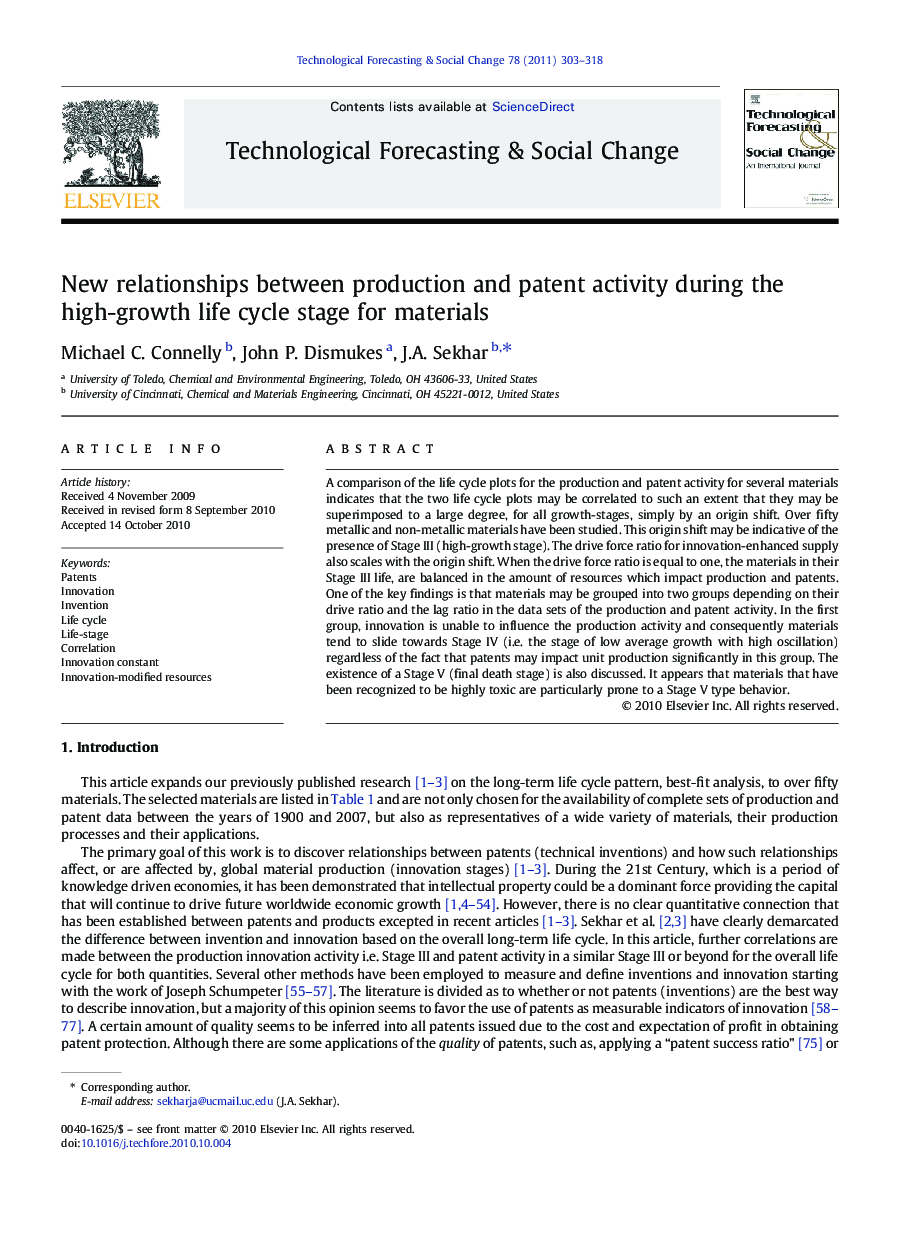| Article ID | Journal | Published Year | Pages | File Type |
|---|---|---|---|---|
| 897002 | Technological Forecasting and Social Change | 2011 | 16 Pages |
A comparison of the life cycle plots for the production and patent activity for several materials indicates that the two life cycle plots may be correlated to such an extent that they may be superimposed to a large degree, for all growth-stages, simply by an origin shift. Over fifty metallic and non-metallic materials have been studied. This origin shift may be indicative of the presence of Stage III (high-growth stage). The drive force ratio for innovation-enhanced supply also scales with the origin shift. When the drive force ratio is equal to one, the materials in their Stage III life, are balanced in the amount of resources which impact production and patents. One of the key findings is that materials may be grouped into two groups depending on their drive ratio and the lag ratio in the data sets of the production and patent activity. In the first group, innovation is unable to influence the production activity and consequently materials tend to slide towards Stage IV (i.e. the stage of low average growth with high oscillation) regardless of the fact that patents may impact unit production significantly in this group. The existence of a Stage V (final death stage) is also discussed. It appears that materials that have been recognized to be highly toxic are particularly prone to a Stage V type behavior.
